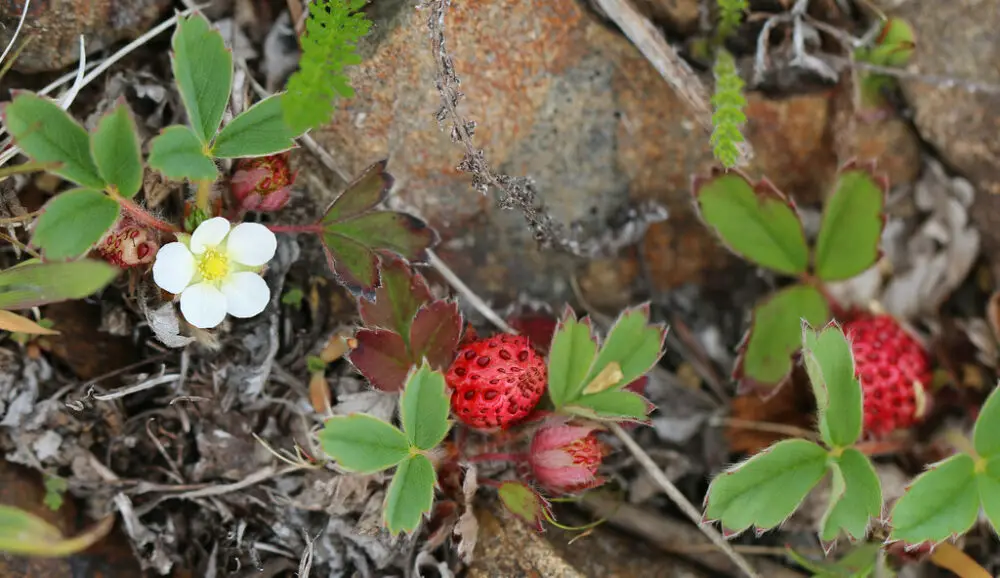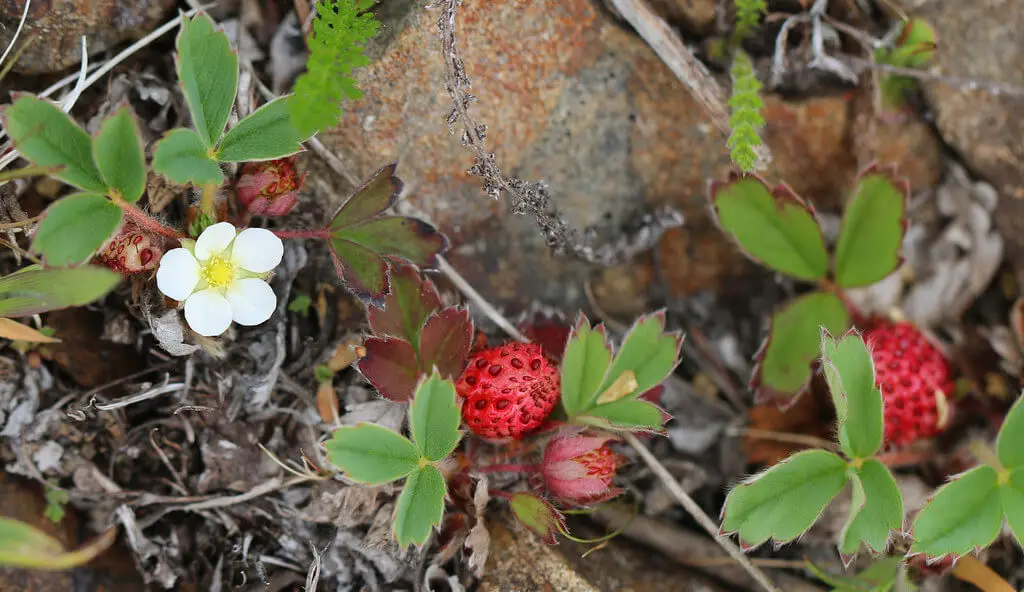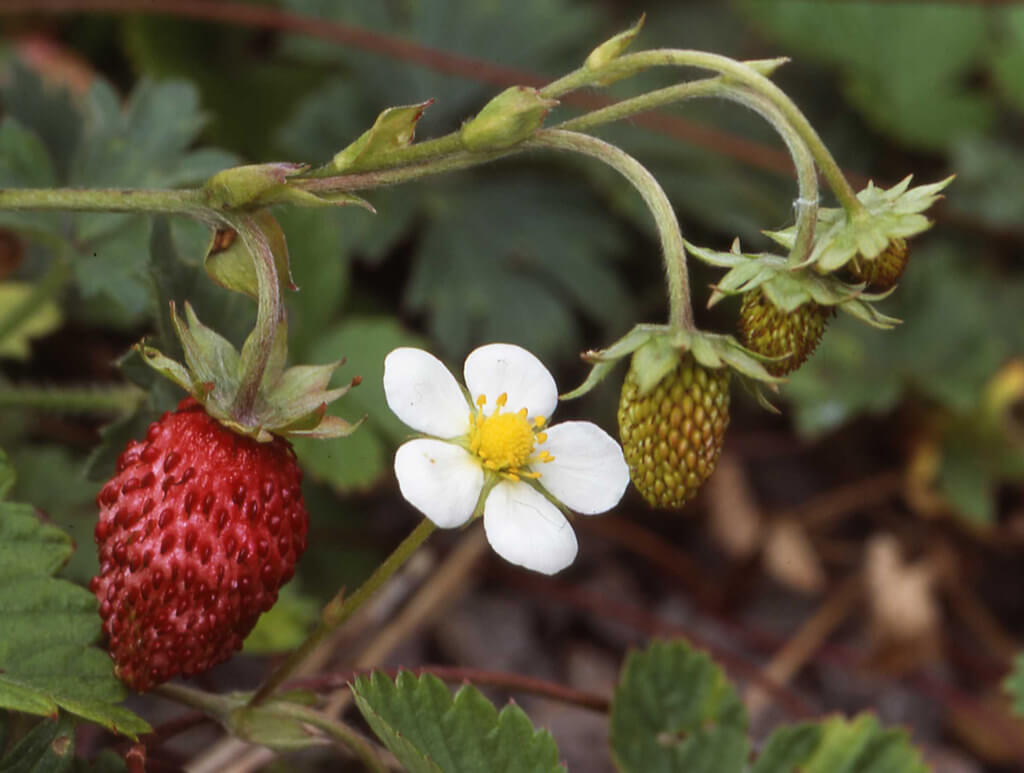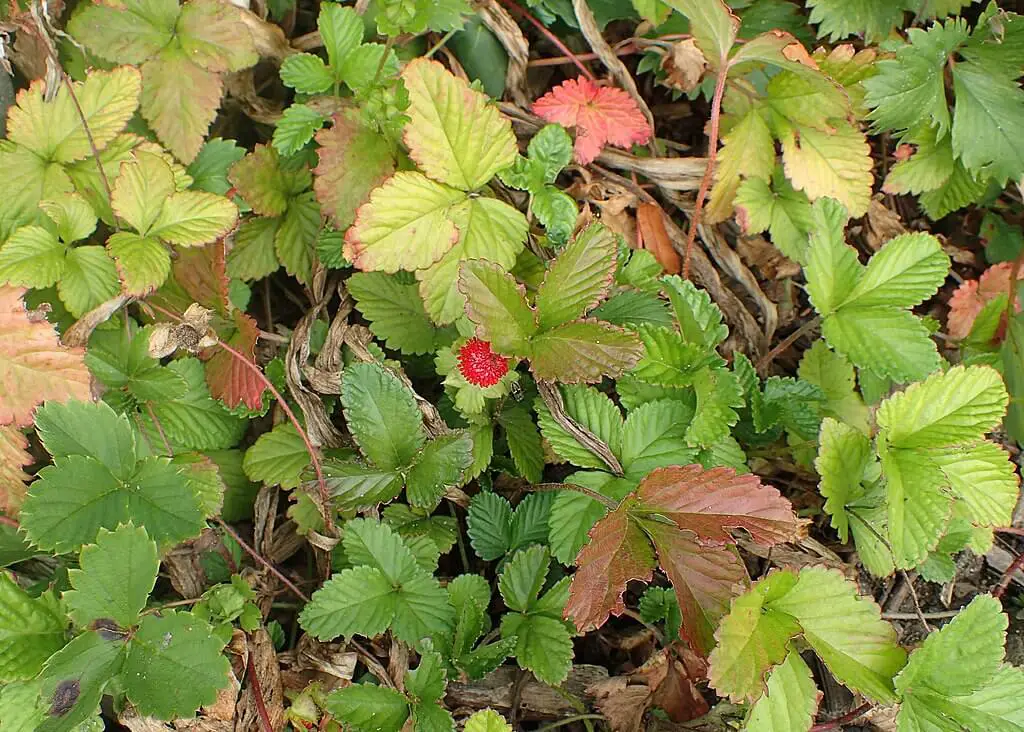Fragaria chiloensis (beach strawberry) is a wild strawberry species. Not only is this small, red fruit edible, but it's also classed as an edible local delicacy in some parts of South America.
Fragaria Chiloensis (Beach Strawberry) Plant Profile
You may also know this strawberry by its common names:
- Beach strawberry
- Chilean strawberry
- Coastal strawberry
Like other strawberries, attractive white flowers bloom from this wild fruit sometime in early spring to early summer. Then comes the bright red, edible strawberry. Cut it open, and you’ll notice it’s white on the inside.
Hailing from the Rosaceae (Rose) family, the Fragaria chiloensis is part of an essential family of plants. It also comes from the Fragaria genus, more commonly known as the strawberry. Again, this wild berry is one of the most crucial wild edible plants globally.
What Are You Foraging For Right Now?
We're thrilled to hear your ideas. What would you like to submit today? Feel free to share your thoughts and experiences with us.
The beach strawberry is an evergreen plant, meaning its leaves stay green and functional all year.
As a low-growing berry, this strawberry plant can only grow from 15 to 30 centimeters tall (6 to 12 inches).
Dark green, toothed leaves are pretty thick, glossy, and trifoliate. These leaves sit in leaflets of three, without hair (glabrous). Moreover, each leaflet is around 5 cm (2in) in length.
The pretty white flowers have 5-flowers of about -18mm. Achenes cover the red, fleshy berries.
Check our video below for more information on how to identify and use wild strawberries in the kitchen.
Where Does beach strawberry Grow?
You’ll most likely find the beach strawberry growing as a native plant in the coastal areas of North America and South America – Pacific Ocean.
But, the beach strawberry has found its way further afield. It is thought that migratory birds may have dispersed the Fragaria chiloensis plant from the Pacific coast, Alaska, and to the mountains of Argentina, Chile, and Hawaii.
For example, some of the beach strawberry’s most popular growing locations include coastal California communities’ grasslands and dunes.

Is Beach Strawberry Edible?
Yes, you can eat the Fragaria chiloensis strawberry.
Why not collect some on your next foraging trip and enjoy them fresh or cooked in several popular dishes?
However, as the beach strawberry is not quite tasty as other strawberries, you may not want to eat them raw.
Any Other Uses for Beach Strawberries?
Although incredibly juicy and most often eaten fresh, the coastal strawberry is not as palatable as other strawberries.
But beach strawberries have other essential uses that make them worth foraging.
Some of the beach strawberries’ common medicinal benefits include the fact that it is:
- Antiseptic
- Astringent
- Emmenagogue
- Galactagogue
- Odontalgic
This medicinal plant has also been used with the notion that it helps to regulate the menstrual cycle.
A poultice of the chewed leaves can also treat burns.
This low-growing red fruit is also great for pollinators like birds and bees due to its easy-to-cultivate nature. It spreads easily to form a superb, dense ground cover.
Can you Grow beach strawberries in the Garden?
Yes, there’s no reason coastal strawberries can’t be found growing in your backyard, as long as your yard meets the conditions for the Fragaria chiloensis.
For example, it will do well in most kinds of soil as it does have some drought tolerance. However, it prefers well-drained soils and full sun.
Beach Strawberry vs. Other Wild Strawberries
There are 600 subspecies of strawberries, all evolving from the five or six original wild species of strawberry. All of these hail from the Rosacea (Rose) family.There are likely differences between Fragaria chiloensis (beach strawberry) and Fragaria vesca (wild Alpine strawberry).
Both these species of strawberry are the only two white strawberries/subspecies of the Fragaria genus, but they grow in different locations.
As mentioned, the beach strawberry is a native plant to south American locations such as Chile, whereas the Fragaria vesca is native to Europe.


Beach Strawberry vs. Strawberry
One thing to remember about the beach strawberry is that it is significantly smaller than the everyday, garden-variety store-bought strawberry.
However, the Fragaria ananassa (commercial strawberry) is a European species that birds and animals love, along with people.


Beach Strawberry Foraging Tips
- It’s worth watching for the beach strawberry in sand dunes and grasslands along the West coast, where they are easy to find.
- Also, look in well-drained soils and full sun in these areas, which these strawberries prefer.
- Look for wild strawberries growing in clusters (they don’t grow in giant swaths) from May to October.
- In well-drained areas with partial sun exposure, you should look for Fragaria chiloensis on slopes, hillsides, and patchy forests.
Check our guide on how to identify mock strawberries when foraging.
Getting into the great, wet outdoors in search of edible plants, herbs, fruits and fungi is one of Sarah’s favorite outdoor pursuits. She thinks there’s nothing better than combining her passion for hiking with the start of the foraging season. Sarah’s definitely not afraid of a little rain and dirt, it’s all part of the fun.

